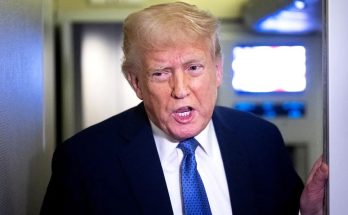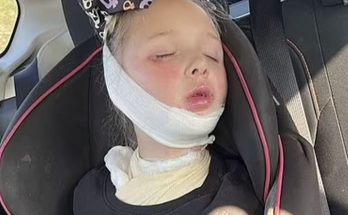
Elon Musk’s electric vehicle company has found an issue with a portion of its cars, which could see people driving in an automobile which ‘increases the risk of a crash’.
According to the manufacturer, it is the Model 3, Model Y and Cybertruck which are affected by this issue, resulting in a recall letter set to be sent out to customers on February 15 2025.
Thankfully, the issue can be resolved via a free software update, however, until then the issue will persist.

Elon Musk’s company needs to recall 700,000 vehicles (Samuel Corum/Getty Images)
While there is a problem with the system, it has not yet resulted in any injuries, crashes or deaths of drivers or passengers.
In response, the company is recalling 694,304 of its models according to a National Highway Traffic Safety Administration letter.
The letter reads: “The tire pressure monitoring system (TPMS) warning light may not remain illuminated between drive cycles, failing to warn the driver of low tire pressure.
“Driving with improperly inflated tires increases the risk of a crash.”
This isn’t the first time the manufacturer has had to recall cars. It took back 1.8 million vehicles in July of this year due to a bonnet issue which saw the software issue failing to detect an unlatched hood.
In May, it also recalled 125,000 vehicles because of seat belt issues, and in February, it called back over 2 million vehicles as warning signals showing in a smaller font size.
As well as manufacturing issues, one family has blamed for the death of a 31-year-old on Musk after he crashed his Tesla while using the self-driving ‘autopilot’ technology.
Genesis Giovanni Mendoza Martinez, was crushed to death on February 18, 2023, after using his Tesla’s ‘autopilot’ drive.

The Cybertruck is one of the models with the fault (Tesla)
A lawsuit was filed by Mendoza’s parents, Eduardo and Maria, and his brother Caleb, who were also in the car and injured during the crash.
They stated that it’s Musk’s fault for allowing the ‘ill-equipped’ feature to be used by drivers.
However, Tesla argued that the cars have ‘a reasonably safe design as measured by the appropriate test under the applicable state law’.
Another customer has also pointed out a major flaw in the Cybertruck design which could see headlights completely unable to illuminate the roads, making it a safety hazard.
TikTok user Joe Fay (@jf.okay) said: “So, I found a major flaw in the Cybertruck’s design.”
The Tesla customer explained how the headlights sit at the bottom of the vehicle, which could be a problem.
He explained: “These headlights are amazing and they’re extremely bright. However, that snow is building up right in front of the headlights.
“That can be a major problem when you’re driving in the winter time, because if snow builds up right here, the headlights are going to be completely blocked.”
Joe continued: “Now, I can’t believe Tesla just didn’t think about this when they put this giant shelf in front of the lights, but if they did, it’s honestly an awful design.
“I’ll let you know how driving is in the blizzard. It’s done pretty well so far, and I haven’t noticed that the headlights are getting all clogged up like that.”

Genesis Giovanni Mendoza Martinez, 31, was crushed to death on February 18, 2023, after using his Tesla’s ‘autopilot’ drive – allowing users to take a back-seat while the car drives itself.
A lawsuit has been filed by Mendoza’s parents, Eduardo and Maria, and his brother Caleb, who was also injured during the crash.
They are currently blaming company’s CEO Elon Musk, after allowing the ‘ill-equipped’ feature to be used on the roads.
Tesla has argued that the cars have ‘a reasonably safe design as measured by the appropriate test under the applicable state law’.

(Contra Costa County Fire Protection District)
They also suggested that accident may have been partly caused by Mendoza’s ‘own negligent acts and/or omissions’.
“No additional warnings would have, or could have prevented the alleged incident, the injuries, losses and damages alleged,” the company responded in a court filing.
But it’s not just the family who have blasted the company for its futuristic features.
The US government has made its stance clear, as transportation secretary Pete Buttigieg in particular, has strongly opposed the ‘autopilot’ technology.
Attorney Brett Schreiber, who is representing the Mendoza’s, told the Independent: “This is yet another example of Tesla using our public roadways to perform research and development of its autonomous driving technology.
“What’s worse is that Tesla knows that many of its earlier model vehicles continue to drive our roadways today with this same defect putting first responders and the public at risk.”
He added that the loss of Mendoza was ‘entirely preventable’.

Elon predicted that the system would be better than ‘human drivers’. (Chesnot/Getty Images)
The attorney described Tesla’s ‘autopilot’ feature as ‘ill-equipped to perform’, and accused them of ‘rushing’ to push product out.
The Mendoza family says their son was persuaded to buy the car after seeing an abundance of marketing from Musk, showcasing the self-driving feature.
Schreiber added: “Giovanni believed his claims were true, and thus believed the ‘Autopilot’ feature with the ‘full self driving’ upgrade was safer than a human driver, and could be trusted to safely navigate public highways autonomously.”
The vehicle he was driving had been in auto-pilot for 12 minutes prior to the crash, and had been driving at an average speed of 71mph.
It collided with a firetruck at a high speed, resulting in his death.
Four firefighters also suffered minor injuries as a result of the failed autopilot system.
And Mendoza isn’t the first to have been victim of a crash using the feature.
Between 2015 and 2022, Tesla customers reported 1000 crashes using the system, and over 1,500 complaints about sudden, unintentional braking.
UNILAD have reached out to Tesla for comment.


